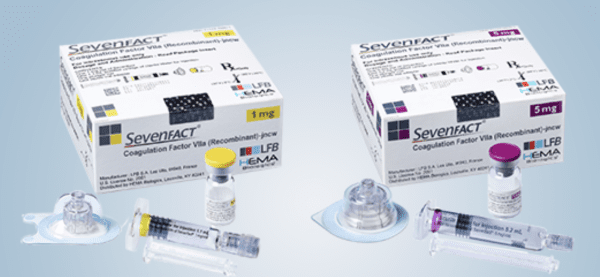Coagulation factor viia Disease Interactions
There are 2 disease interactions with coagulation factor viia.
Coagulation factor VIIa (applies to coagulation factor viia) thrombosis
Major Potential Hazard, Moderate plausibility. Applicable conditions: Thrombotic/Thromboembolic Disorder, Liver Disease, Heart Disease
Serious arterial and venous thrombotic events have been reported with the use of coagulation factor VIIa. Patients at an increased risk of thromboembolic complications may include those with a history of coronary heart disease, liver disease, disseminated intravascular coagulation, post-operative immobilizations, elderly patients, and neonates. It is recommended to exercise caution when administering coagulation factor VIIa to patients at risk and the potential benefit of treatment should be weighed against the risk of these complications.
Coagulation factor VIIa (applies to coagulation factor viia) allergies
Moderate Potential Hazard, Moderate plausibility.
Hypersensitivity reactions, including anaphylaxis, can occur with coagulation factor VIIa. Patients with a known hypersensitivity to mouse, hamster, or bovine proteins may be at a higher risk of hypersensitivity reactions. Discontinue infusion and administer appropriate treatment when hypersensitivity reactions occur.
Switch to professional interaction data
Coagulation factor viia drug interactions
There are 9 drug interactions with coagulation factor viia.
More about coagulation factor viia
- coagulation factor viia consumer information
- Check interactions
- Compare alternatives
- Side effects
- Dosage information
- During pregnancy
- Drug class: miscellaneous coagulation modifiers
- En español
Related treatment guides
Drug Interaction Classification
| Highly clinically significant. Avoid combinations; the risk of the interaction outweighs the benefit. | |
| Moderately clinically significant. Usually avoid combinations; use it only under special circumstances. | |
| Minimally clinically significant. Minimize risk; assess risk and consider an alternative drug, take steps to circumvent the interaction risk and/or institute a monitoring plan. | |
| No interaction information available. |
See also:
Further information
Always consult your healthcare provider to ensure the information displayed on this page applies to your personal circumstances.


